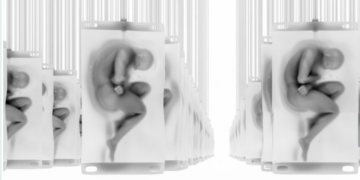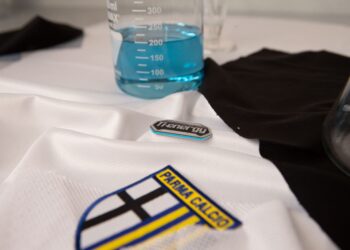The researchers of the Charles III University of Madrid have created special “vibrant” clothes that are able to transmit tactile sensations to the wearer: will they be the future of fashion?
A sweater that embraces, a t-shirt that corrects posture or a neck scarf that massages the neck: these are just some of the possible (future) applications of the “vibrant clothes” designed by researchers at the Charles III University of Madrid. An international team coordinated by PhD Ana Tajadura-Jimenez has created special clothes able to transmit tactile sensations to the wearer. How is this possible? Thanks to nanotechnology. The researchers have inserted tiny motors – 10mm wide and 3mm thick – able to vibrate inside the weave of fabrics such as jersey or polyester. The result is real intelligent fabrics able to vibrate according to pre-set programs. “Garments of this kind can revolutionize fashion” said Dr. Kristi Kuusk (Estonian Academy of Arts) who collaborated on the creation of the vibrating garments. “In the coming years, people could wear the emotions aroused by designers, program their clothes to stimulate feelings of happiness, calm, strength or confidence. I believe that clothes of this kind can take care of us, not only physically, but also mentally”.
You might also be interested in —> Pura-Case: the ozone layer that eliminates viruses from fabrics.
“Vibrant clothes convey positive feelings”

Ana Tajadura-Jimenez of the Charles III University of Madrid is the mind behind the idea of vibrant clothes. In a study published in the journal Frontiers, the researcher explained that “clothing is usually a mere projection of images outside, as attraction, wealth or professionalism. We wondered if it was possible to design clothes that could influence our inner feelings. We programmed these devices so that they could vibrate following specific patterns, selectable from a pocket control. The tests were carried out on 29 people who experienced the vibration patterns and were asked to describe the sensations that the clothes caused”. The sensations returned by the clothes were “catalogued” into three categories: water, cloud and rock. “For example, if the subject reports perceptions related to softness and warmth, the answer is placed in the cloud category. The type of material could also influence the sensations provoked: soft polyester was more suitable for giving back the idea of water, while smooth polyester seemed more associated with rock”.
You might also be interested in —> The disinfectant dispenser (to wear) for hands that are always clean

































